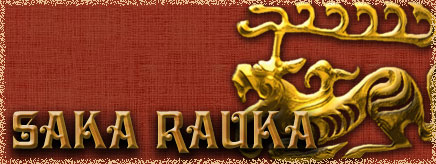History
The late 9th century BCE Neo-Hittite reliefs at Kargamiš, could be the earliest record for Mysia. The regent Yariri boasts how his renown reached, among other places, the land of the "Musai". Thus modern historians have linked the Mysoi to the "Muški/Moschoi", who invaded the Hittite region of Wiluša (the north-western portion of Anatolia), three hundred years prior the relief. These tribes served as warbands/mercenaries as far as the Caucasus. Assyrian records mention five kings, so at this time, much like for several centuries to come, Mysia was composed by tribes, under their respective chiefs, forming coalitions or joining larger forces.
In the 8th century BCE Phrygian kingship developed and it held sway over the Mysoi. By the 7th century BCE, however Mysia was under Lydian supremacy and this condition continued until 546 BCE, when Kūruš of Pârsa (Cyrus the Great) conquered the region. He then left the famed Lydian treasury in the hands of Paktyes, who revolted and sought assistance at Kyme, where the Aioleis were growing weary of the Persian expansion. They went as far as seeking aid from Sparta, but nothing came of it and were defeated. Thus the people of Mysia recognized Persian suzerainty. Later in 497 BCE satrapal forces, largerly composed by Mysoi and Lydoi, were engaged against revolting Aioleis and Iones. In 480 BCE Khšayāršā of Pârsa (Xerxes I)'s invading army marched through Mysia, reaching Abydos where it crossed the Hellespontos over pontoon bridges.
During the Pentekontaetia (the period of fify years), the coasts of Mysia joined Athenai in the Koinon Delion (Delian League), which quickly became more of an Arche (empire). This led to animosity and in 411 BCE, Abydos and Lampsakos were easily inspired to side with Sparta by Derkylidas, the whole of Troas followed suit. Thus the vital grain supply from the Pontos Euxeinos (Black Sea) was in deep peril. All Athenai could do, pressed on many fronts, was mounting punitive raids. Claiming slaves and portable booty from Lampsakos (which lacked strong walls at the time) and exorting a large ransom from Kyzikos, to spare it a similar fate. However these tactics weren't enough and Athenai assembled a fleet, defeating in 410 BCE a Peloponnesian force in the waters of Abydos. Pressing on, the allied Athenian army, under Thrasyboulos, won an hard-fought battle at the shores west of Kyzikos. This instability caused the Mysoi to assert their independence and started raiding indiscriminately Persian estates. Prompting Dārayavahuš of Pârsa (Darius II), to send his son Kūruš (Cyrus the Younger) against them. Allowing the latter in 401 BCE to hire mercenaries, Xenophon and Oi Myroi (the Ten Thousand) among them. Later the Archagetes Agesilaos of Sparta (Agesilaus II) in 395 BCE, invaded Mysia to compel the Mysoi to join his army. Ravaging as far as Mount Olympos, each side ambushed the other until a truce was reached, to recover the corpses of the fallen. However the Mysoi weren't impressed enough and Agesilaos took revenge against Mysian communities on his way back.
In 366 BCE Yervand of Hayasdan rose up against Artakhšaça of Pârsa (Artaxerxes II) and was joined by an alliance of other communities. However he betrayed them right away, in exchange of Mysia. Building something of a private kingdom. Leaderless the rebellion failed, but in 356 BCE the new Khšāyathiya Khšāyathiyānām (King of Kings), of the same name, ordered the disbandment of private armies, causing yet another rebellion. Yervand, by this time minting gold coins at Pergamon in his own image, allied himself with Athenai and was ready to make his bid for power. Yet this time, outmanouvered at his own game, was confronted by a coalition of Pârsa, Thebai and perhaps Makedonia. So he decided to yield, being allowed to keep his estates in Mysia, with the exception of Pergamon.
336 BCE saw the arrival of Macedonian forces under Parmenion, setting up at Abydos, they raided Persian assets and collected troops among Hellenes in the Mysian coasts. For the next couple of years, Memnon of Rhodos engaged the Makedones in a clever campaign of maneuver, catching isolated detachments, forcing Parmenion to fallback to Abydos. His strategy, however, wasn't followed any longer and in 334 BCE, Alexandros of Makedonia (Alexander III) secured Mysia at the River Grenikos. During the turmoil of the Diadochoi, in 322 BCE Krateros and 6.000 Macedonian veterans marched through Mysia, to cross over the Hellespontos. Athenai, being in open rebellion, had sent a fleet to secure her all-important grain supply. Once again near Abydos a battle was joined and Krateros was free to complete his trek. Later in 318 BCE ambitious Antigonos Monophthalmos of Phrygia seized the Propontis (Sea of Marmara) coast and gradually courted the Aioleis and poleis of the Hellespontos to ally with him. However with the battle of Ipsos (301 BCE), the Antigonid cause seemed helpless in Mikra Asia and Lysimachos of Thraikia happily obliged to fill that power vacuum, taking care of few staunch garrisons. He proved to be an effective ruler, securing Mysia by vigorous programs of city foundation or refoundation, military colonization and uniting Hellenic poleis in leagues, under governors of his choosing. One such figure was Philetairos, put in charge of Pergamon and its treasury of 9.000 silver talents. After the execution of Agathlokes (son and heir of Lysimachos), who had started to assert his succession, around 283 BCE, a number of officers, including Philetairos, who had collaborated with Agathokles formed a conspiracy to defect in favour of Seleukos Nikator. It's possible that Philetairos offered to fund Seleukos' enterprises, drawing from the Pergamese treasury, in exchange of autonomy. The Asian Basileus, more interested in seizing Thraikia and Makedonia, accepted and thought he would deal with the ambitious eunuch on his way back. Fortunately for Philetairos, in 281 BCE Ptolemaios Keraunos assassinated Seleukos and Pergamon hastily recovered the latter's corpse. Properly cremated, it was sent to his heir Antiochos, who had finally reached Mikra Asia to deal with insurgents. This gesture convinced the Basileus of Philetairos' loyalty and allowed him to keep his autonomy.
From then on Philetairos initiated his policy of euergesia (benefaction). For example, he gifted 600 shields to Kyme, receiving city honours, subtly bestowed during seleukid festivals. It is clear that the communities of Mysia seeked protection against the Galatai raiders and it is in this context that Philetairos established military colonies. These would form new ethnicities of mixed origins like the Mysomakedones and Mysotymoleitai, recording Mysian and Macedonian veterans forming new communities at the borders of Mysia. These liberties and the recent re-dating of early Pergamene coinage (bearing Philetairos image and now thought to be struck during his reign), suggest the adoption by Antiochos I of Achaemenid practices, granting such rights to local dynasts.
In 263 BCE Eumenes I succeeded to power and faced a mercenary revolt (likely the military settlers), denoting some difficulties. These probably included a renewal of Galatian raids, which eventually forced Eumenes I to end them with a tribute. In the past it was thought, that Eumenes tried a breakaway from Seleukid authority, but this has come into question. First of all such a conflict stands solely on Phylarchos. An historical writer criticized by his contemporaries for falsifying and re-writing events to shock his audience. Plus during Eumenes I's reign, a Seleukid dating formula continued to be employed and Seleukid minting activity in Aiolis was increased. There's also an arbitration by Seleukos Kallinikos granting the Aeolian polis of Pitane to Eumenes I. All these activities following twenty years, after an alleged victorious engagement against Antiochos I, make the latter a distortion of events.
In 237 BCE Attalos I, the Pergamene successor, won a battle in the Kaikos valley against Antiochos Hierax and his allied Galatai. This prompted Attalos I to assume the diadem. Hierax was a pretender, who had just defeated Kallinikos and established his own kingdom. Thus Attalos' actions were legitimized, for he owed no allegiance to the pretender. Faced with inefficient Seleukid control in Mikra Asia, which could not preserve stability, Attalos I made the choice to assume full authority. In 225 BCE, Seleukos Keraunos launched a campaign against Attalos I, but this does not imply that the latter's loyalty towards the legitimate Seleukid line and his resistance against usurpers, was unappreciated. What worried the Basileus of Asia, was the Pergamene influence spreading as far as the Tauros. However he was assassinated by his own troops and his relative Achaios vowed to continue his mission. The latter enjoyed great success, shutting Attalos inside Pergamon's walls, and realized that the diadem of Asia was better than loyalty. Once again Attalos found himself treading on a fine line between legitimacy and overstepping his bounds. In 216 BCE an agreement with Antiochos III was reached, for a joint campaign against Achaios: Pergamon was finally recognized as independent, but with rights only over Mysia. Attalos now pursued a cordial coexistence with Seleukid interests, concentrating on Makedonia and dedicating statues to, the now self-styled Basileus Megas (Great King) Antiochos III and Zeuxis.
In 193 BCE, Attalos' successor, Eumenes II however realized that Pergamon could not expand without conflict with the Seleukidai. No matter how much independent he was, Seleukid superiority in Mikra Asia was apparent, where Antiochos Megas had even asserted dominance of the Troas. Eumenes II then refused to marry Antiochos Megas' daughter and furthered his relations with Roma, allies since Attalos' reign. In the ensuing war the Pergamese basileus organized the crossing of the Hellespontos for the Roman legiones. Withstanding a siege on Pergamon, Eumenes II was eventually victorious and his influence greatly extended. These larger borders of 187 BCE, brought the following conflicts away from Mysia, allowing Eumenes II to introduce a new monetary policy and embark on a lavish building programme, transforming Pergamon into one of the showpieces of the Hellenistic world. He extended the sanctuary of Athena Nikephoros, refounding the Nikephoria games, which reached panhellenic status. He also enlarged the Pergamon library, founded by his father Attalos I, to be second only to that of Alexandreia. Lastly he began the construction of the Great Altar, themed after the Gigantomachia, perhaps as a parallel to the Attalid struggle against the Galatai.
His brother Attalos II, regent for Eumenes II's son, had continued this envisaged relationship of equals between Pergamon and Roma, but it became clear it was turning into a one-way dependency on the SPQR's goodwill. Therefore Attalos II mainly focused on holding the kingdom together and engaged in political intrigue, for example setting up, in 157 BCE, Alexandros Balas as Basileus of Seleukid Syria.
In 138 BCE, after the death of his regent, Attalos III ascended to the throne. He seems to have had scholarly pursuits in botany and pharmacology, but was not much interested in governing. Still epigraphic evidence speaks of cultic benefactions and at least one military success. However his eccentricity forged, in posterity, an image of cruelty and misgovernment. But the records are vague and without foundation (the Roman Senatvs formally decreed all of Attalos III's acts valid), perhaps due to slander for a Basileus, who did not behave "kingly". In 133 BCE, dying childless, Attalos III bequeathed his possessions to "the Roman peole".
A certain Aristonikos, of unknown origins, saw his chance for power and declared himself a bastard brother, assuming the diadem as Eumenes III. He faced fierce opposition from the poleis; while rulers from Bithynia, Pontos, Kappadokia and Paphlagonia already aimed at carving up the Pergamese kingdom. Eumenes III lacked support, only Phokaia joined him spontaneously, and suffered setbacks, so he resorted to freeing slaves, advocating radical changes for the suppressed rural populace. Defeated and captured in 129 BCE, he was paraded publicly in Roma and the Senatvs, judging Asia too unstable, assumed responsibility, forcing a settlement among the powers of the region.
The Romani came to describe Pergamon's possessions as the "spoils of Asia", something all too clear from the overtaxation, which had left the people of Mysia seething over the collectors' arrogance and greed. So widespread was this sentiment, that in 89 BCE Mithradates VI of Pontos, having captured Manivs Aqvillivs, had him tied backwards on a donkey, paraded through towns until Pergamon and there poured molten gold down his throat. Still this wasn't enough, with the passing of winter, Mithradates VI now exploited this hatred for his gains, by sending letters to every poleis and governors instructing them to execute every single Romanvs living in Mikra Asia. By way of encouragement he offered a share in the property of the victims, freedom for every slave killing his Roman master and halving of debts. This unleashed a massacre of 80.000 people. At Adramyttion the killers drowned indiscriminately men, women and children. At Pergamon archers shot foreigners down, as these clung to the statues of the gods, seeking sanctuary in temples. Lastly, always per order of Mithradates VI, the corpses were thrown outside and left unburied.
With the fortunes of war swinging towards the Roman side in 85 BCE, many in Mysia and Mikra Asia began to ask themselves what Roma would do to the region that had committed such atrocities and their loyalty to the Pontic cause started to waver. Mithradates VI certainly did not help the situation, when he deceived the Galatian aristocracy to join their hostage families at a banquet in Pergamon, promising a conciliation and massacrated them, except for three nobles, who managed to escape. At this point poleis simply refused entrance to Pontic troops. Mithradates answered by granting citizenship for resident aliens, freeing slaves and cancellation of debts; effectively establishing stasis (civic strife) in every poleis. This prompted several high-ranking Pergamenes courtiers and officials to form conspiracies to overthrow the Pontic basileus. They were, however, betrayed and tortured, revealing their fellow plotters, causing Mithradates to collect more information throughout other major poleis, eventually purging 1.600 people. This climate offered Gaivs Flavivs Fimbria, a political enemy of Svlla, who was left to his own devices, too good an opportunity to take over the riches of Mysia and its royal court. Quickly disposing of half-trained levies at the River Rhyndakos, Fimbria reached Pergamon and was informed that Mithradates had fled to Pitane in Aiolis, attempting a naval escape. At the harbour Mithradates was just ultimating the preparations, when both Fimbria and Lvcivs Licinivs Lvcvllvs, Svlla's subordinate, arrived one by land and the latter by sea. Here the genius of the Pontic basileus saved his skin once more, by offering to submit to the "official" Roman army (Fimbria's) he was free to sail away unopposed, since the domestic support for ending the war against Mithradates would've doomed Svlla. Having made clear how Mithradates and Svlla needed eachother at this stage, they met at Ilion and, in a show of realpolitik, brought an end to the First Mithridatic War.
Fimbria and his men, as frustrated as it can be imagined they were, raced to the Troas, but found the meeting over and the populace, informed him, had entrusted itself to Svlla. The Roman general responded that the Troiani were already friends of the SPQR, so there was no reason to not let him enter. With the gates open, pillage and slaughter followed, what was not worth stealing was burned and "not a house, not a temple, not a statue was left standing". This forced, in 84 BCE, Svlla to cross once again, setting up a circumvallation. A desperate Fimbria, deserted by his men, took his own life. Woes for Mysia and Mikra Asia were not over, Svlla declared that Roma was owed 20.000 talents in reparations and back taxes; he also ordered his soldiers to be quartered by the locals, each family providing meals, an allowance and clothing to their "guests". If this was not enough, in 73 BCE Mithradates VI, who mustered another large army, descended into Mysia across the coast of the Propontis (Sea of Marmara). All major poleis either fell or opened their gates, except for Kyzikos. Besieging it turned out to be a logistical nightmare for Mithradates. Set backs, storms, dysentery, frozen winter cold and a Roman counter siege annihilated the Pontic army, as it tried to evacuate.
In 48 BCE Pvblivs Servilivs Vatia Isavricvs, as the governor of Asia, declared Pergamon a democracy, reducing the amount of tribute owed to Roma and shifted tax collection to local aristocrats. The economy of the Mysian poleis slowly started to recover after a century of merciless exploitation. While the Mysian tribes of the interior, although taking part in the conflicts, managed to preserve their communities. It's recorded, for example, that Gaivs Jvlivs Caesar Octavianvs (Octavian) in 31 BCE named Kleon of the Abrettenoi, for switching sides during the civil war against Marcvs Antonivs, the priesthood of Komana. This Kleon must've been a priest-chief figure, because Strabon states he also was priest of Zeus Abrettenos. With his enhanced authority, Kleon expanded and refounded his hometown into Juliopolis. Lastly in 29 BCE Pergamon established games and a cult in honour of Roma and Octavianvs, this was to evolve, in the next century, into the practice of Neokoroi (temple-wardens) and the cult of the living emperor.
Strategy
The incredible position, controlling the Hellespontos, gold mines, availability of war-like tribes ready to join the fighting force and defensible geography make Mysia the archetype seat of power. Any ruler, with imperial designs, will find it vital.


 From Frontline for fixing siege towers of death
From Frontline for fixing siege towers of death x30 From mikepettytw for showing how to edit in game text.
x30 From mikepettytw for showing how to edit in game text. From Brennus for wit.
From Brennus for wit.


 Reply With Quote
Reply With Quote









 -Silentium... mandata captate; non vos turbatis; ordinem servate; bando sequute; memo demittat bandum et inimicos seque;
-Silentium... mandata captate; non vos turbatis; ordinem servate; bando sequute; memo demittat bandum et inimicos seque;














Bookmarks